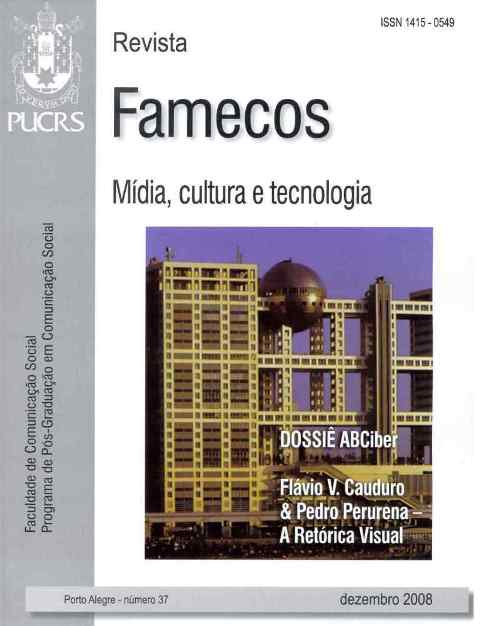The pluralistic ecology of locative media
DOI:
https://doi.org/10.15448/1980-3729.2008.37.4795Keywords:
Communication, hybridism, mobile devicesAbstract
From the late 1980s, the term "hybridism" became a key word for characterizing contemporary societies, especially Latin American societies. After the explosion of planetary communication networks and the World Wide Web, the use of the words "hybridism", "hybrid" and "hybridization" or "hybridization" has expanded considerably to refer to both the convergence of the world's media Digital as to the mixture of languages in the hypermedia, that is, the junction of the hypertext with the multimedia that defines the language that is proper of the networks. Recently, the use of the word "hybridism" has expanded even more to refer to the interconnection of physical spaces of circulation with the virtual spaces of information to which the users of mobile devices connect. In these spaces have been developing practices of locative media. This article aims to highlight these practices as examples of a pluralist ecology of the culture characteristic of the current state of cybermedia.Downloads
References
BHABHA, Homi K. The location of culture. London: Routledge, 1998.
BENEDIKT, Michael. El ciberespacio: algunas propuestas. In: BENEDIKT, Michael. Ciberespacio. Los Primeros Pasos. México: CONACYT/Sirius Mexicana, 1993.
CANCLINI, Néstor Garcia. Culturas híbridas. Estrategias para entrar y salir de la modernidad. Mexico: Grijalbo, 1989.
DONALD, Merlin. Origins of the modern mind. Three stages in the evolution of culture and cognition. Cambridge, MA: Harvard University Press, 1991.
GIBSON, William. Neuromancer. London: Harper Collins, 1984.
LEMOS, André. Mídias locativas e territórios informacionais. In: SANTAELLA, Lucia; ARANTES, Priscila (eds.). Estéticas tecnológicas. Novos modos de sentir. São Paulo: Educ, no prelo.
LENZ, Ronald. Locativa media, 2007. Disponível em: http://spresearch.waag.org/images/LocativeMedia.pdf Acesso em: 8 jan. 2008.
NOVAC, Marcos. Arquitecturas líquidas en el ciberespacio. In: BENEDIKT, Michael (ed.). Ciberespacio. Los Primeros Pasos. México: CONACYT/Sirius Mexicana, 1993.
PINHEIRO, Amálio. Aquém da identidade e da oposição. Formas na cultura mestiça. Piracicaba: Editora Unimep. RUSSEL, Ben. Headmap manifesto, 1994. Disponível em: http://www.headmap.org/headmap.pdf. Acesso em: 22 jun. 2006.
SANTAELLA, Lucia. Linguagens líquidas na era da mobilidade. São Paulo: Paulus, 2007.
______. A estética política das mídias locativas. Nómadas, n. 28. Instituto de Estudios Sociales, Bogotá, 2008, p. 128-137.
SMITH, Barry. The ecological approach to information processing. In: NYÍRI, Kristóf (ed.). Mobile learning. Essays on philosophy, psychology and education. Vienna: Passagen Verlag, 2003, p. 17-24.
SOUZA e SILVA, Adriana. Do ciber ao híbrido: Tecnologias móveis como interfaces de espaços híbridos. In: ARAUJO, Denize Correa (ed.). Imagem (Ir) realidade. Comunicação e cibermídia. Porto Alegre: Sulinas, 2006, 21-51.
Downloads
Published
How to Cite
Issue
Section
License
Copyright
The submission of originals to Revista Famecos implies the transfer by the authors of the right for publication. Authors retain copyright and grant the journal right of first publication. If the authors wish to include the same data into another publication, they must cite Revista Famecos as the site of original publication.
Creative Commons License
Except where otherwise specified, material published in this journal is licensed under a Creative Commons Attribution 4.0 International license, which allows unrestricted use, distribution and reproduction in any medium, provided the original publication is correctly cited.






